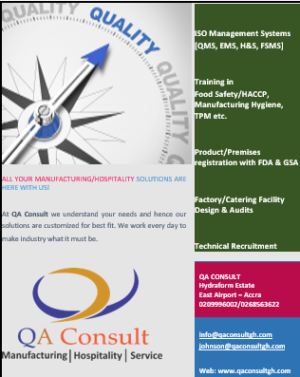Policy is a statement of intent and is implemented as a procedure or protocol by an organisation. Policy is a deliberate system of guidelines to guide decisions and achieve rational outcomes. Policies are generally adopted by an organisation or society. Policies usually emerge from the vision and mission of the organisation and become roadmaps for fulfilling the organisation’s strategic ambition.
The most profound definition of quality has been “meeting and exceeding customer expectations”. Anyone implementing a quality management system should be aware that the customer is king, and the essence of implementing such a system is to satisfy customers. To fulfil the above, a quality policy becomes inevitable. ISO 9001:2015 Clause 5.2 talks about establishing a quality policy and ensuring the policy is communicated to the workforce and other interested parties.
According to the ISO 9001 Standard, top management shall establish, implement and maintain a quality policy that: is appropriate to the purpose and context of the organisation and supports its strategic direction; provides a framework for setting quality objectives; includes a commitment to satisfy applicable requirements and includes a commitment to continual improvement of the quality management system
Top Management Responsibility
It is the responsibility of top management to establish a quality policy for the organisation. Top management is also responsible for documenting and communicating the quality policy to all employees and relevant interested parties. These interested parties include suppliers, customers, contractors, third-parties, co-packers etc.
Quality Policy Deployment
This first thought of deploying policy is getting to the key issues first. It goes beyond locking top management and consultants behind some huge doors and getting them to work on figures. What drives a policy is typically the end-user of that policy. The customer must be perpetually hung on the wall – where all eyes will gaze for direct decisions on customer satisfaction to be made.
Since a policy outlines intentions and commitments, there should always be pillars that support such intentions. These are breakdowns of individual activities which will help make the policy statement come alive. To achieve this, standard operating procedures must be designed to make the policy pillars come alive. For one pillar, there could be several sets of procedures and guidelines to make it work.
The outcome of such established standard operating procedures can be strong only if resources are provided to serve as the needed oil to lubricate the wheels of such standards and procedures. Resources will include human capital, equipment and financial capital. Standards and procedures will not support the organisation if not effectively communicated. Hence, top management must ensure all employees are trained on documented procedures, processes and equipment. The right environment must also be created to help employees achieve the organisation’s objectives.
Turning Procedures and Guidelines into Tangible Outputs
What does not get measured does not get done. It is important to mention the Deming Cycle at this point. Also called the PDCA (Plan, Do, Check, Act) Cycle, it supports proper planning, execution and monitoring, as well as ensuring corrective actions are established. Supervision is critical to successful outcomes. It is the responsibility of top management to recruit frontline managers and supervisors to ensure seamless operations. The outcome of the PDCA cycle always goes a long way to influence policy, and even the overall vision and mission of an organisation.
Quality Policy Review
ISO 9001:2015 Clause 9.3.1 states that top management shall review the organisation’s quality management system, at planned intervals, to ensure its continuing suitability, adequacy, effectiveness and alignment with the organisation’s strategic direction. This review is holistic and includes the quality policy.
Quality policy review is key, and hence this is done by top management during the scheduled quality management review meetings. Inputs to the management review typically include status of previous management review meeting actions, changes in external and internal issues relevant to the quality management system, adequacy of resources etc. All the listed inputs can have direct impacts on the quality policy which may warrant changes.
Conclusion
A quality policy to an organisation is akin to a compass for a ship. A quality policy gives direction to any organisation as far its quality management system is concerned. Establishing a quality policy therefore gives an organisation a roadmap to navigate issues related to quality. The result is a business that understands what it takes to meet and exceed the expectations of its customers. In contrast, a business without a quality policy has already missed its way in attracting customers to its products. A quality policy established today is the beginning of a march toward customer satisfaction and business growth.
Johnson Opoku-Boateng is the Founder & Lead Consultant, QA CONSULT (Consultants and Trainers in Quality Assurance, Health & Safety, Environmental Management systems, Manufacturing Excellence and Food Safety). He is also a consumer safety advocate and helps businesses with Regulatory Affairs. He can be reached on +233209996002, email: [email protected]; [email protected]











